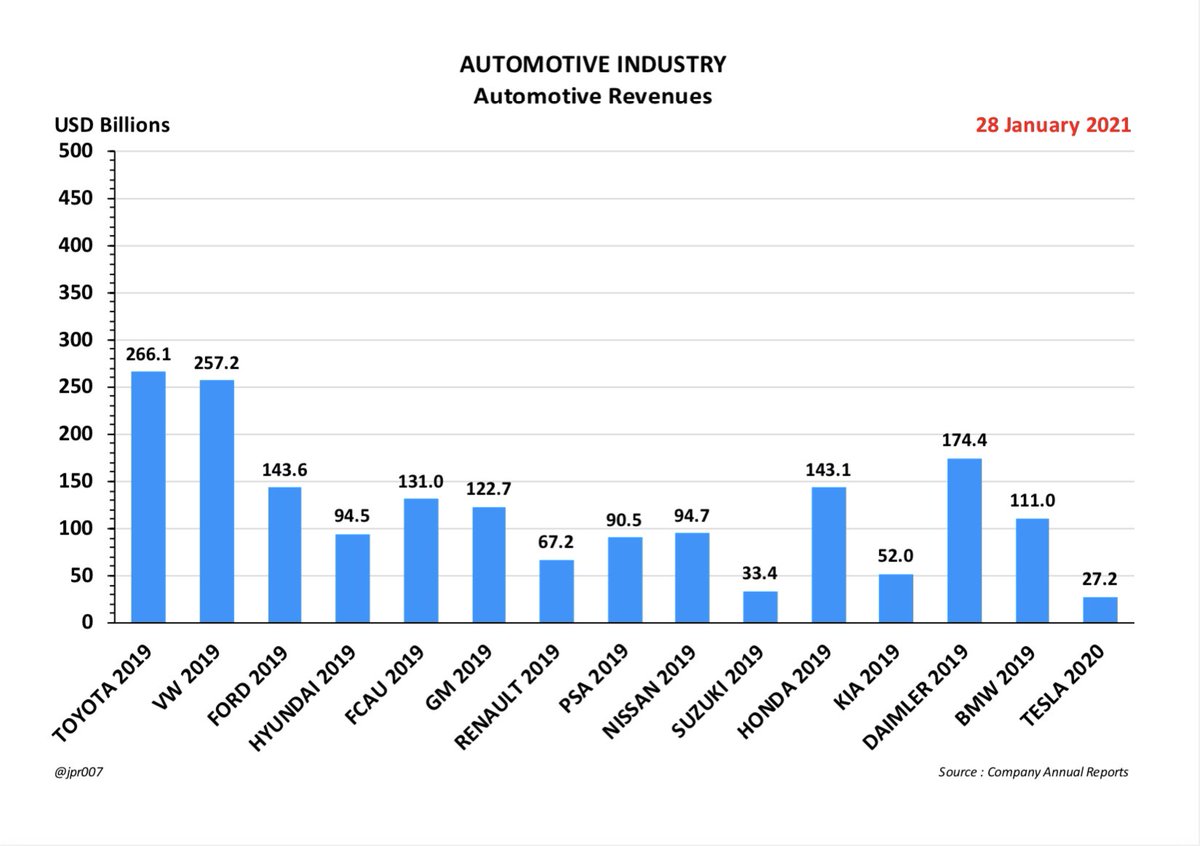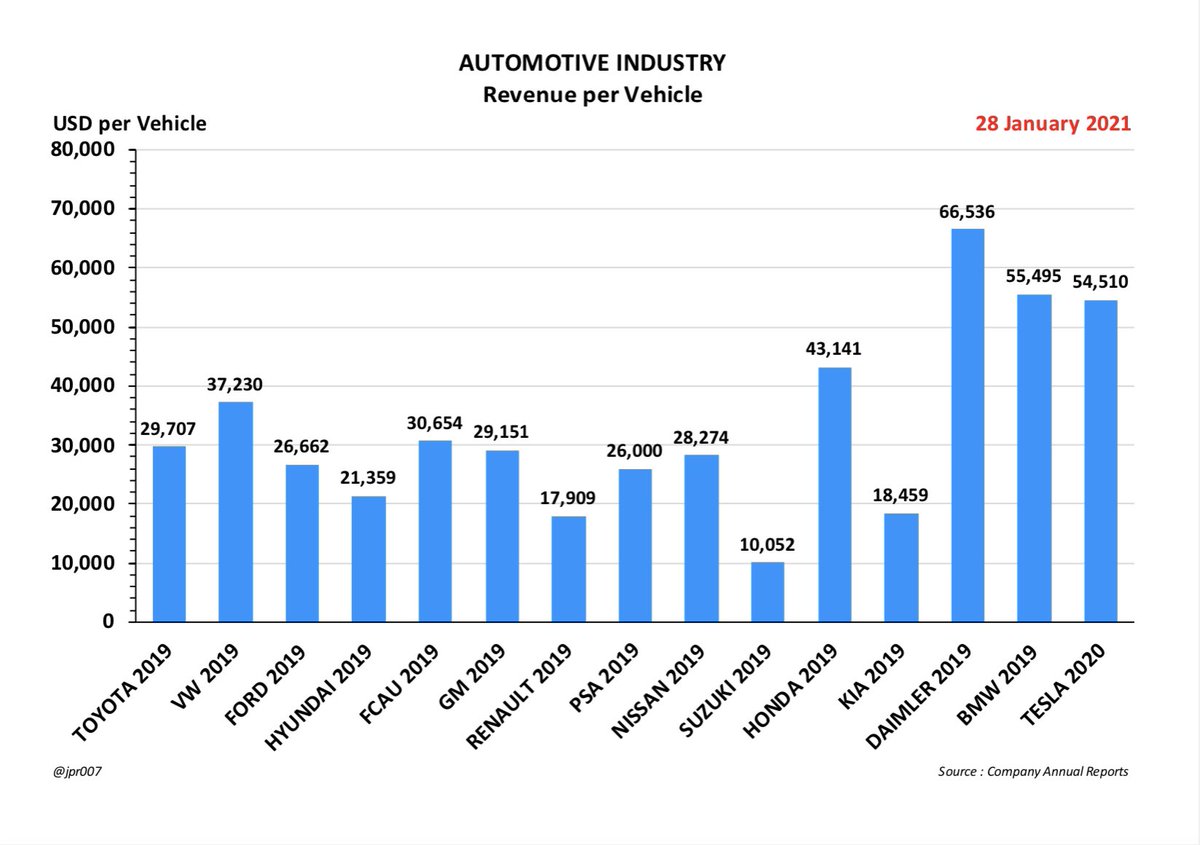
Robinhood Gets Almost Half Its Revenue in Controversial Bargain With High-Speed Traders bloomberg.com/news/articles/…
Robinhood Markets Inc. has built a reputation on its origins in finance counterculture and a steal-from-the-rich ethos. But the firm, which offers no-fee stock trading, is making almost half its revenue from one of the most controversial practices on Wall Street
The startup, valued at $5.6 billion, was bringing in more than 40% of its revenue earlier this year from selling its customers’ orders to high-frequency trading firms or market makers like Citadel Securities and Two Sigma Securities . . .
. . . according to three people with knowledge of the matter, who asked not to be identified because the details are private
Almost all retail brokerages employ the practice, called payment for order flow, but it’s an unlikely strategy for a company built on an anti-Wall Street message
Following questions about the practice from Bloomberg, the company on Friday amended the "How We Make Money" section of its website, and published a letter from its co-founder, Vlad Tenev, outlining the practice
“I want to use this opportunity to shed light on how Robinhood executes your orders: no jargon, only the facts,” Tenev wrote
The letter said that the company did not take the size of market makers’ payments into consideration when deciding where to direct trades
The letter said that the company did not take the size of market makers’ payments into consideration when deciding where to direct trades
“We send your orders to the market maker that’s most likely to give you the best execution quality,” Tenev said in the letter, posted on the company’s blog
“For even finer control, we offer limit orders and stop limits, which allow you to name your own price”
“For even finer control, we offer limit orders and stop limits, which allow you to name your own price”
Even so, the practice of selling to market makers has long attracted criticism from regulators and consumer advocates, who argue that it creates a conflict of interest where consumers can lose out
Citadel Securities and Two Sigma Securities declined to comment
Citadel Securities and Two Sigma Securities declined to comment
Robinhood was founded in 2013 and quickly became a Silicon Valley darling
It attracted millions of millennial investors—a demographic traditional Wall Street firms have found tough to capture—with the prospect of paying nothing to trade
It attracted millions of millennial investors—a demographic traditional Wall Street firms have found tough to capture—with the prospect of paying nothing to trade
The startup raised more than $500 million from venture capitalists
Last month, less than four years after the release of its app, the Menlo Park, California-based company said it was on the way to an initial public offering and had plans to move into new products and markets
Last month, less than four years after the release of its app, the Menlo Park, California-based company said it was on the way to an initial public offering and had plans to move into new products and markets
Tenev and co-founder Baiju Bhatt have said they were moved to found the company after the 2008 financial crisis
Criticisms raised by the Occupy Wall Street protests in 2011 hit them like a “gut punch," Bhatt said in an interview this year
Criticisms raised by the Occupy Wall Street protests in 2011 hit them like a “gut punch," Bhatt said in an interview this year
Inspired by the movement, the pair left the previous company they'd founded, which ran servers for high-frequency traders, to start Robinhood
“We were part of the problem,” Bhatt said.
“We were part of the problem,” Bhatt said.
Until its Friday letter, it was difficult to find any mention of payments for order flow on the company’s website, though it linked to required disclosures about the practice in fine print
In the past, Tenev has credited Robinhood’s efficiency for giving it an edge
In the past, Tenev has credited Robinhood’s efficiency for giving it an edge
“Some of these legacy brokerages are running on paper and fax machines and have legacy mainframes that have been sort of operating their businesses for many many decades," Tenev said at a June conference in New York explaining why it can offer free trading while competitors can't
Payment for order flow is a decades-old practice that can be traced to the early years of electronic trading
It was pioneered by Bernie Madoff at his regulated securities firm
He later became infamous for a multibillion-dollar Ponzi scheme he ran on the side
It was pioneered by Bernie Madoff at his regulated securities firm
He later became infamous for a multibillion-dollar Ponzi scheme he ran on the side
Here's how it works: Retail brokers like Robinhood focus on recruiting customers and building the trading interface, but don't actually execute their clients' orders
They outsource that to firms—including Citadel, Two Sigma and Wolverine Securities—that pay for the right to handle those trades
While orders from large, sophisticated investors can burn the market maker who executes the trade, retail trades are considered relatively safe
While orders from large, sophisticated investors can burn the market maker who executes the trade, retail trades are considered relatively safe
These firms earn a tiny bit of money off each transaction, often 1 cent or less per share
Some see payment for order flow as a critical piece of market infrastructure—facilitating the fast and cheap buying and selling of stocks
Some see payment for order flow as a critical piece of market infrastructure—facilitating the fast and cheap buying and selling of stocks
But critics of high-frequency trading have long argued that the practice actually hurts the little guy, to the advantage of large firms
Federal rules dictate that brokers must seek the best execution for clients’ trades, but finding the best price possible is not necessarily a requirement
Consumer advocates say the system creates an incentive for brokers to route orders to the market maker that pays the most
Consumer advocates say the system creates an incentive for brokers to route orders to the market maker that pays the most
During last year’s fourth quarter, regulatory disclosures indicated that Robinhood shipped virtually all of its orders for stock trades to four high-speed market makers
The bulk was bought by Citadel, which paid Robinhood an average of “less than $0.0024 per share" on the trades it was routed in that quarter
Those small numbers add up—Robinhood’s users have executed more than $150 billion in transactions
Those small numbers add up—Robinhood’s users have executed more than $150 billion in transactions
During that quarter in 2017, Citadel and Two Sigma paid the company more per share of order flow than they paid TD Ameritrade Holding Corp., E*Trade Financial Corp. and Charles Schwab Corp., filings show
Robinhood was also allocating more of its orders to Citadel than it was to Two Sigma, which offered rebates that were a third smaller per share, and to Wolverine, which paid it even less per share
It’s no longer possible to compare Robinhood’s payments with other brokers’. In an unusual move earlier this year, the company began filing disclosures on payment for order flow in terms of dollars traded instead of shares traded
“We report our rebate structure on a per-dollar basis because this accurately reflects the arrangement we have with market makers," Robinhood said in another new section of its website, following questions from Bloomberg
It also said the structure benefits people who are trading small amounts of stock
Today, on a per dollar basis, “all market makers with whom we work have the same rebate rate,” Tenev wrote in his letter
He also said that the rebates allowed the company to charge consumers less
Today, on a per dollar basis, “all market makers with whom we work have the same rebate rate,” Tenev wrote in his letter
He also said that the rebates allowed the company to charge consumers less
“Robinhood’s zero-commission model has unlocked the ability for every American, not just large institutions, to participate in a variety of investing strategies that were previously economically unfeasible”
Of the pricing, Tenev said, “Robinhood earns ~$0.00026 in rebates per dollar traded
That means if you buy a stock for $100.00, Robinhood earns 2.6 cents from the market maker”
Some experts say payment for order flow can benefit retail customers, with little adverse impact
That means if you buy a stock for $100.00, Robinhood earns 2.6 cents from the market maker”
Some experts say payment for order flow can benefit retail customers, with little adverse impact
"If you're an investor and you're holding things for six months, a year, or two years and you lose out on half a penny, or a tenth, or two-tenths of a cent, it's immaterial," said Larry Tabb
He is the chief research officer of Tabb Group, a consulting firm that works with high-frequency trading firms
But regulators have scrutinized both brokers and market makers over rebates in recent years
But regulators have scrutinized both brokers and market makers over rebates in recent years
TD Ameritrade, for example, faces a class-action lawsuit alleging its use of the payment-for-order-flow system is unfair
The company said it disagreed and would appeal
The company said it disagreed and would appeal
Whatever the impact on consumers, some believe payments for order flow may not be a sustainable revenue source for Robinhood, thanks to regulatory pressures and consumer ire
“Robinhood's revenue model could easily disappear," said Tyler Gellasch, executive director of Healthy Markets, an investor advocacy group
“They've made it clear that they are comfortable living on this regulatory edge”
“They've made it clear that they are comfortable living on this regulatory edge”
Long-term, investors say that Robinhood's vision is to sell a wide variety of services to millennial customers originally attracted by no-fee trades—provided they don’t jump ship to Fidelity Investments, Schwab or a newer, shinier entrant in this crowded market
That eventually would wean it from payment-for-order-flow revenue
But how quickly it will be able to make the transition is another question
But how quickly it will be able to make the transition is another question
Two venture capitalists, speaking on condition of anonymity because the discussions were private, expressed concern that Robinhood's ties to high-frequency traders might undermine its image and stymie expansion plans
A third said it was the reason he didn't invest
A third said it was the reason he didn't invest
• • •
Missing some Tweet in this thread? You can try to
force a refresh















